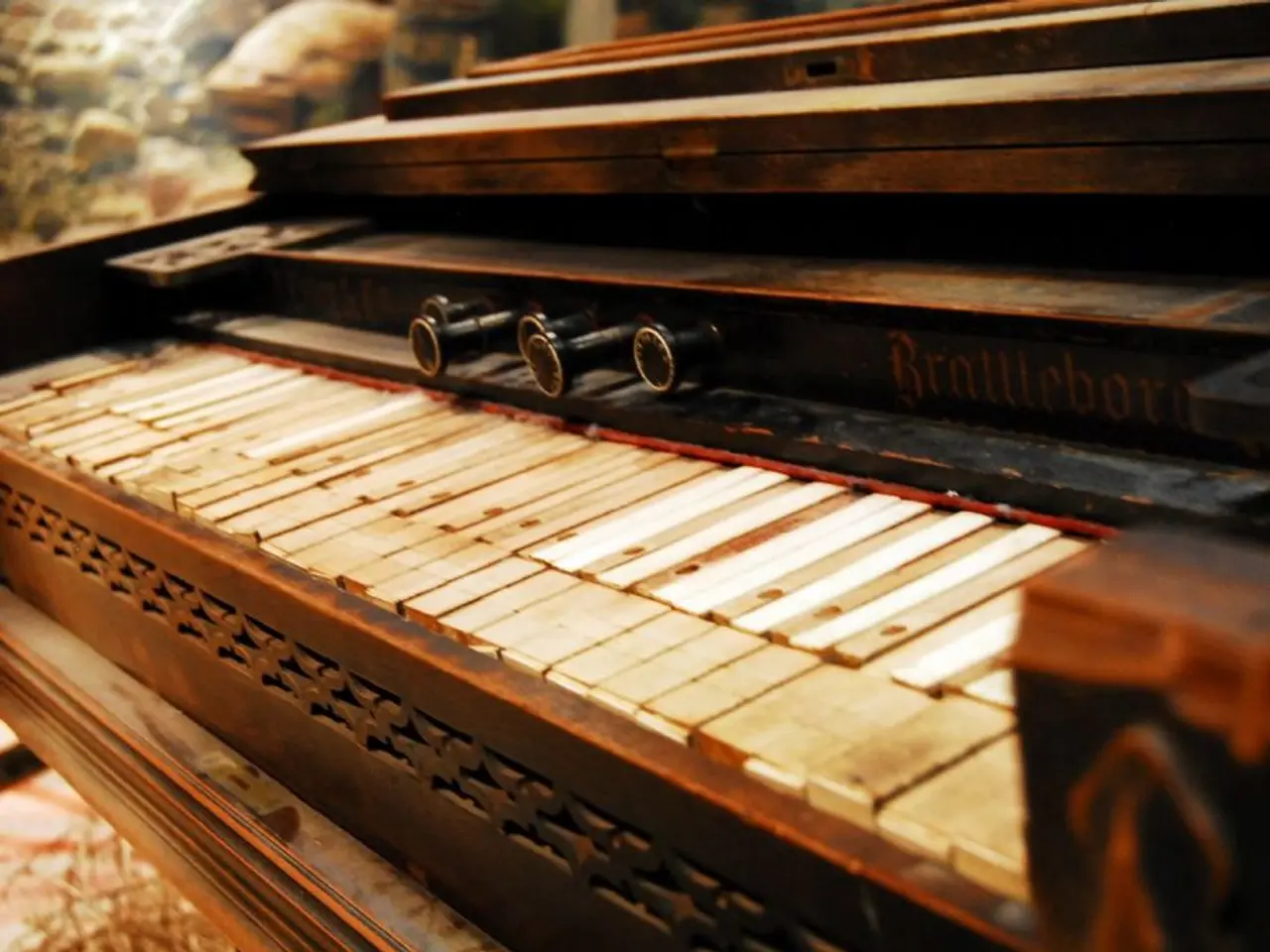Transforming a completely produced song into a solemn, melancholic piano rendition
In the world of music, rearranging popular songs into piano ballads is a delicate art that requires a keen ear for harmony, a deep understanding of dynamics, and a knack for creating tension. A recent example of this transformation is the rearrangement of the song "Answers," originally produced with a full band, now performed on the piano.
The fast passage in the left hand of the original production creates a shadowy, muddy chaos for the listeners. However, in the rearrangement, the bass notes, while not distinctive, contribute to the overall harmonic tension that is a hallmark of piano ballads.
The aim of the rearrangement was to maintain the signature passages and features of the main production while making it delicate and growing stronger. To achieve this, several key strategies were employed.
Firstly, focal points were preserved by identifying the main melodic and emotional moments in the original production and ensuring they remained prominent in the piano arrangement. Dynamic contrast, phrasing, and articulation were used to highlight these sections clearly on the piano.
Secondly, tension was added by varying the dynamics and rhythmic intensity across sections. Contrasting sustained soft chords with more rhythmic or accented passages built tension and release throughout the piece. Techniques such as modulation were also employed subtly within the piano version to shift emotions and create harmonic tension.
Challenging passages were dealt with by slowing down practice tempos significantly to ensure clarity and expression before gradually increasing speed. Difficult rhythmic or melodic elements were broken down, and focus was placed on phrasing and articulation to maintain musicality instead of just technical accuracy.
Practical tips included using dynamic shaping and expressive articulation to breathe life into the piano arrangement, incorporating varied textures within the same instrument, and planning where the softest and loudest moments occur to create a compelling dynamic arc for the piano ballad.
The rearrangement of "Answers" is a challenging task for both the composer and the pianist. Notable features include a pizzicato sensation created by adding slightly syncopated phrases, a sudden change of mode in the second chorus to increase tension, and the incorporation of the rhythm from "This is me" from "The Greatest Showman" to add tension as the chorus approached.
The arrangement was necessary due to live, no-playback requirements for smaller venues where only a piano could fit. Carolina Aguirre Anderson, a pianist and friend of the artist, assisted in the rearrangement. The rearrangement tells the story by the piano, making it a captivating performance that is currently enjoyed as it is, but the composer may consider turning it into a piano piece in the future.
For those interested in arranging and composing songs, the article "Composition insight" by Juan Rezzuto may be useful. The article provides insights into rearranging a fully produced piece into a Piano Ballad, offering valuable advice for musicians looking to explore this art form.
The rearrangement, a task for both the composer and the pianist, required the preservation of focal points and the addition of tension to make "Answers" a captivating piano ballad. Dynamic contrast, phrasing, and articulation were used to highlight the main melodic and emotional moments, while techniques such as modulation and varying dynamics created harmonic tension.








